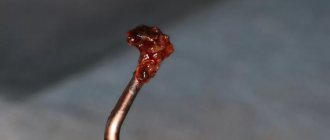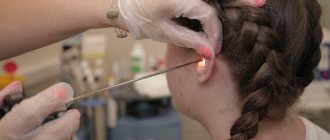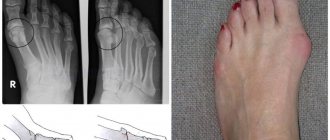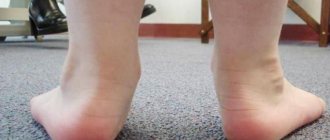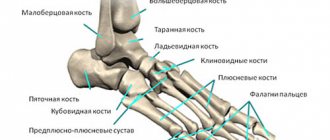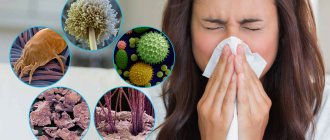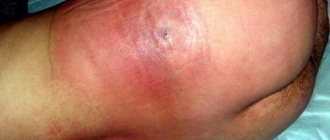Athlete's foot is a group of fungal diseases that have a common localization and similar clinical manifestations. They are very common and affect people of any age (rarely children), prone to a chronic relapsing course.
Infection occurs in bathhouses, showers, on beaches, gyms, when using someone else's shoes and other household items contaminated with fungal elements.
In the pathogenesis of the disease, the anatomical and physiological characteristics of the skin of the feet, increased sweating, changes in sweat chemistry, metabolic and endocrine abnormalities, injuries of the lower extremities, and vegetative dystonia are of significant importance. Pathogens can remain in a saprophytic state for a long time without causing active clinical manifestations. Athlete's foot has several clinical forms, each of which can be combined with nail damage.
Symptoms of fungus
The course and development of the disease is influenced by the physiological characteristics of the skin of the feet, increased sweat production, disturbances in the functioning of the endocrine system, and leg injuries. Fungal pathogens can remain dormant for a long time without showing symptoms. If there are disturbances in the body, they can become active. Athlete's foot is characterized by the presence of several forms of the disease, which can be supplemented by damage to the nail plates.
Fungal infection can be determined if several symptoms are present:
- the nail plate changes its natural color: usually yellow or dark color is fixed, but the nails can even become white or completely black;
- tissue keratosis under the plate: outwardly it looks as if a hard growth has appeared under the nail;
- thickening and delamination of the plate;
- deformation of the nail: protrusion, growth to the side, ingrowth into the skin;
- fragility of the nail plate: parts of it may break off.
What is skin and nail fungus?
The term “fungus” refers to a whole complex of various diseases and pathogens. But usually we are talking about only some types of fungus:
Dermatomycosis.
Caused by the fungi Trichophyton, Microsporum and Epidermophyton. Affects the skin and sometimes nails. At first it may not seem serious, because the first symptoms are:
- the appearance of pink or red spots on the body that have a clear shape and pigmentation around the perimeter;
- itching at the site of the spots, which does not always appear.
If you do not consult a doctor in time and do not prescribe the correct treatment, then the symptoms can become much more serious:
- the appearance of dandruff;
- baldness of affected areas;
- the occurrence of suppuration;
- uncontrolled increase in the area of affected areas.
Onychomycosis.
Caused by the fungi Trichophyton rubrum, Trichophyton interdigitale, Trichophyton tonsurans. It affects the nails and is the most common type of fungal infection. It has the following symptoms that appear as the fungus develops:
- the nail begins to turn yellow;
- the nail becomes exfoliated and thickens;
- an unpleasant odor appears that cannot be eliminated by any means;
- the plate becomes deformed, irregularities and “waves” appear;
- the nail completely dies and “falls off” from the finger.
How does the disease progress?
The first manifestations of the disease begin in the spaces between the fingers, especially between 4 and 5, since there is the smallest distance between them. A slight itching begins, and over time a strip of thickened and slightly flaky cuticle appears on the finger fold.
After 2-3 days, a small crack forms, from which serous fluid is released, which acts as an excellent medium for the successful proliferation of the fungus. The tough layer of epidermis may fall away, revealing a dark pink area underneath. The progression of the disease leads to its spread over all the toes and the adjacent side of the foot.
Through damaged areas of the upper part of the skin, the fungus can penetrate into the deeper layers behind the epidermis. The disease is accompanied by an eczematous reaction. Fluid-filled blisters form on the skin, which are very itchy. Over time, they can coalesce and erode, resulting in wet spots.
Reference! When studying skin affected by fungus, it was found that the “bare” wet surface that appears under the blisters does not contain the pathogens themselves, but is only a consequence of their activity.
Without proper timely treatment, the fungus affects the entire surface of the foot and toes, sometimes extending to the area above the heel. There is instability in the course - the disease either slows down or intensifies again.
Without treatment, the disease can drag on for many years. In this case, there is a high risk of complications from pathogenic streptococcus: the fluid in the blisters begins to fester, foci of inflammation spread beyond the initial boundaries, and the foot swells greatly. It becomes difficult for a person to move due to painful sensations in the legs. In addition, complications may arise in the form of problems with the lymph nodes.
The development of athlete's foot usually occurs in the summer months. At this time, sweating increases, fingers often become wet, and increased humidity in the interdigital areas creates favorable conditions for the introduction of fungus and its active reproduction.
Mycosis usually appears on the 1st and 5th fingers, spreading from the free side. The nail gradually thickens, acquires a yellowish tint and an uneven sharp edge. Over time, pronounced subungual hyperkeratosis of varying degrees appears.
Why can skin and nail fungus be dangerous?
Fungus of the skin and nails can occur either as an independent disease or as a consequence of existing ones. For example, frequent fungal infections may indicate problems such as:
- presence of viral hepatitis;
- HIV infection;
- a general decrease in immunity, which can cause the development of very serious diseases.
In addition, the development of fungus can cause serious harm to health and reduce the quality of life. With endless itching, it is impossible to concentrate on daily activities, and sores on exposed parts of the body can be a deterrent for many.
Moreover, the fungus is easily transmitted to other people, and being a source of infection is unpleasant, to say the least. By the way, if you notice symptoms of fungus, you should not visit public places with conditions favorable for its development: saunas, swimming pools, cosmetology and beauty salons.
Treatment of foot fungus
For successful therapy, you need to pay a lot of attention to the treatment of lesions.
A person affected by fungus should take foot baths every day with potassium permanganate. It is necessary to get rid of the crusts, puncture the blisters and remove the “fringe” along the boundaries of the erosive areas and the covers of the festering blisters.
After the bath, you need to apply medicinal bandages soaked in an aqueous solution of copper sulfates (0.1%) and zinc (0.4%) or a 1% solution of resorcinol to the affected areas. After the weeping areas have begun to heal, dermozolon, mycozolon are used, and then alcohol solutions based on fungicide and fucorcin. If necessary, the kit is supplemented with fungicidal ointments.
Obtaining the desired result does not depend on the drugs used, but on the correct sequence of their use according to the current situation with inflammatory processes.
Additional treatment plays a huge role after the end of the fight against the lesions, because it helps prevent relapses. The skin of the feet is wiped with 2% salicylic alcohol or 1% thymol, and the use of 10% boron powder is also required. To get rid of and prevent the appearance of fungi in shoes, you need to wipe them from the inside with a formaldehyde solution, wrap them in thick fabric for a couple of days, and then dry them in the fresh air. For socks, tights and stockings everything is simpler - you just need to boil them in this solution for 10 minutes.
If a complication occurs with pyococci, then antibiotics are used - methicillin, cephaloridine and others. Bed rest is mandatory.
Causes of fungal diseases of the skin and nails
Here are just the most basic reasons for the appearance of fungus on the skin or nails:
1. Lack of hygiene.
You don't have to go weeks without showering to get fungus. Sometimes it’s enough to not wash your feet once after a hard day at work. Especially if your feet sweat in shoes, as happens, for example, in winter boots.
2. Dirty floor at home.
In our standard apartments, the hallway is a transit area where people walk around both wearing shoes and barefoot. Dirt brought from the street can contain absolutely any microorganisms, and not everyone is ready to wash the floor every evening. Therefore, it is best to wear slippers at home.
3. Public saunas and swimming pools.
There is no need to refuse to visit the pool or sauna: their benefits for the body have long been proven by hundreds of studies. But it’s definitely not worth walking there barefoot or sitting on surfaces without a towel.
4. Contact with animals.
You shouldn’t be afraid to touch your cat or dog, but it’s better not to let them play with stray animals and always wash their paws after walks. And if you pet an unfamiliar pet on the street, be sure to immediately wash your hands with soap or use an antiseptic: fortunately, today its presence is a new form of etiquette.
5. Contact with soil or sand.
Walking barefoot on the hot sand on the seashore or on the warm earth by a cool river is something worth waiting for summer for or going to warm countries for. But this pleasure can easily turn into a trip to the dermatologist: public beaches are almost the main breeding grounds for fungus. If the surfaces in the pool are washed and treated, then this is definitely not done with sand or earth. We advise you to buy beautiful slates and not worry about your health.
Case study
Patient A. came for an initial appointment in November 2009 with complaints of changes in the structure and color of nails, itching in the groin area. He has been ill, according to him, for about six years. Treatment with Orungal, Lamisil and Batrafen Lac did not bring relief. The patient experienced great anxiety and even despair when the process moved to his fingernails, which became the decisive impetus for visiting the mycologist. Upon examination, the nails of A.'s big toes are completely affected: thickened, crumbling, yellow in color. Detachment of the epidermis, itching, and cracks in the skin between the fingers were also observed. On the first and fifth fingers of the right hand there are yellow spots, thickening and detachment from the nail bed. Inguinal region: large, clearly defined scaly plaques, excoriations.
At the beginning of December, the results of A.'s tests were completely ready. Using an accurate history, physical examination and laboratory methods, eczema, onychodystrophy, psoriasis of skin folds, erythrasma and candidiasis of skin folds - severe skin diseases with identical external signs - were excluded. To confirm the fungal etiology of this process, material was taken from the nail plates and the skin of the groin area. In both cases, microscopy revealed fungal mycelium, and the exact pathogen was identified in culture - Trichophyton rubrum.
Already at the first examination, it became obvious that for a successful recovery the patient needed a therapeutic spectrum, including broad external therapy, therapy with systemic antimycotics, and therapy for dystrophic processes in the nail bed that arose as a result of the duration of the disease. In addition, recommendations were given aimed at improving microcirculation and improving blood flow to the nail plates, which should ensure the delivery of the necessary nutrients, also prescribed to accelerate nail growth and reduce treatment time.
The third visit was scheduled for A. at the end of February. Upon examination, a significant improvement in condition was observed. So, in particular, in the groin area the skin is absolutely healthy, blood biochemistry tests are normal. The treatment regimen has been adjusted (in the process this must be done once every two months).
The last visit took place at the end of April 2010. Based on the results of the examination and repeated tests (blood biochemistry and microscopy), patient A. is absolutely healthy.
Ointments with a disinfecting effect
The main treatment for fungal diseases is carried out with fungicidal agents. But in order to prevent the addition of infections, ointments with antiseptic and disinfecting effects are additionally used. They are applied to the skin and nail plates 2-3 times a day.
The most effective disinfecting ointments include:
- Inflarax;
- Salicylic ointment;
- Miramistin;
- Boric ointment;
- Betadine;
- Sulfuric ointment;
- Zinc ointment.
Miramistin and Inflarax are prescribed for dermatomycosis complicated by pyoderma and abscesses. These ointments kill bacteria that cause pustular rashes.
Details about diagnostics
In some cases, in addition to examination and microscopic examination, additional tests may be needed. So, in especially advanced or difficult to diagnose cases, the patient needs to check the function of the liver and kidneys. To do this, you need to donate blood for biochemistry: apartate aminotransferase and anine aminotransferase, creatinine. It is also necessary to exclude hepatitis B and C. Only based on these tests (biochemistry, microscopy and culture), it is possible to prescribe the correct therapy for the patient, which will get rid of the problem once and for all and will not harm the patient. Once every 1.5 months, a biochemical blood test is repeated to monitor drug tolerance. Most often, everything remains normal, but in rare cases of an individual reaction, an increase in indicators may occur. In this case, hepaprotectors are prescribed, the dosage or frequency of administration is reduced, or a lighter drug is prescribed.
WHAT IS A FUNGUS?
Fungal diseases of the skin and nails belong to a group of human infectious diseases that are caused by pathogenic fungi. Fungal infections (mycoses) are different. There are very severe forms of infections with high mortality. However, not many people suffer from them. Nail mycosis is not one of them and it is impossible to die directly from it. But fungal infections of the skin and nails are one of the most common fungal diseases. This is a contagious disease transmitted from person to person.
WHAT DOES NAIL FUNGUS LOOK LIKE?
Many people do not pay attention to changes in the nail plates, very often considering these changes to be a consequence of injury or age-related characteristics. Fungal nail diseases have many different manifestations. But as a rule, changes in nails due to a fungal disease have three main manifestations: changes in the color of the nail plate, its thickening, crumbling or destruction.
FUNGUS OR NOT FUNGUS?
So, you may notice some changes in the skin or nail plates. It remains to decide whether it is a fungus or not. There are a lot of known non-fungal diseases of the skin and nails - several hundred names. However, according to statistics, every second nail disease is fungal. That is, if your nails are changed, the chance of having nail fungus is 50%, regardless of any manifestations and factors. What about foot skin diseases? They obey the same laws of probability. That is, most lesions on the skin of the feet are fungal. Remember, untreated foot fungus will sooner or later turn into nail fungus. But you can’t get rid of nail fungus so easily. Don't fool yourself. If you suspect you have a skin or nail disease, contact a mycologist! Despite the fact that most nail changes turn out to be a fungus, the other nature of these changes should also be taken into account. Here we need to highlight, first of all, chronic nail injury. Changes in nails can occur with some common skin diseases, internal infectious diseases, damage to the nervous, endocrine, cardiovascular systems, various types of intoxication, as well as dystrophy. Finally, nail changes can be congenital. These changes in the nails look similar to a fungal infection, but they are not. Treatment with antifungal drugs for non-fungal nail diseases, of course, will not be successful. This is another reason to consult a mycologist rather than try to treat yourself if there are any changes in the nails.
IS IT POSSIBLE TO RECOGNIZE A NAIL FUNGUS YOURSELF?
No you can not! And not a single professional doctor, no matter how much experience he has, will undertake the treatment of a fungal disease without confirming the diagnosis in the laboratory, even with the most typical signs of fungus on the legs. Laboratory confirmation is a prerequisite for any fungal disease. To put it simply, if a laboratory finds a fungus in a skin flake or a piece of nail taken for analysis, then this is a fungal disease.
DILEMMA: TO TREAT OR NOT TO TREAT A FUNGUS?
Some people have doubts whether it is worth taking treatment for nail fungus at all. Many people argue as follows: does treating a fungal disease require money? Requires. How long will it take to be treated? Perhaps for a long time. Then, really, why bother being treated for mycosis at all? Does it really matter that the nails have been changed, because they can finally be hidden... Is this game worth the candle? Why do you need treatment for mycosis? Let's try to understand this issue... Once it starts, a fungal infection will not go away until the fungus is destroyed. Fungi are very tenacious and can survive for months in fallen skin scales. What then can you expect from a fungus lurking in your nails? First, fungal cells enter the skin, attach, multiply and spread on it and then, under favorable conditions, penetrate into the nail. Over time, the fungus affects all parts of the nail and spreads to other nails or skin. Nail fungus is a hotbed and source of infection for infecting other parts of the body. Even if all foci of fungus on the skin of the feet or torso are cured, re-infection will occur from the remaining source of infection in the nails. Fungal nail diseases reduce the quality of life. Research conducted by the National Academy of Mycology has shown that the presence of nail fungus or athlete's foot significantly reduces the quality of life - a set of indicators that characterize a person's emotional, mental and social well-being. It turned out that the quality of life with fungal nail disease decreases to an average of 50–55% of the full value characteristic of a healthy person. At the same time, patients noted not only physical inconvenience associated with thickening or destruction of nails, but also experienced various experiences, fears, and negative emotions. It was found that nail fungus greatly limits a person’s activity, interfering with his rest, exercise, and communication with other people. Moreover, feelings of inconvenience and shame about the condition of one’s nails sometimes prevented timely consultation with a doctor. The longer the disease lasted, the more severe the nail fungus became, and the worse the quality of life became. In addition to reducing the quality of life, the fungus leads to certain health problems. The first and main health problem caused by the presence of mycosis of the nails is the fungus itself - a chronic infectious disease that steadily destroys the nails and threatens to spread to the people around them, especially members of the patient’s family. By the way, the presence of a relative with a fungus is noted by at least 1/3 of patients with nail damage. According to medical statistics and epidemiological studies, in Russia the presence of fungal nail disease can be expected in almost every fifth adult. Moreover, the incidence rate has increased 2.5 times over the past 10 years. A further increase in incidence is expected. Moreover, the likelihood of having fungus increases with age: approximately 2 times for every 10 years of life. Untreated mycosis of the nails and mycosis of the feet are considered as entry points for other infectious diseases - for example, bacterial - erysipelas. Fungal infection of the nails significantly complicates the course of diabetes mellitus and can lead to serious complications. Allergization of the human body with a fungal infection is possible - the formation of hypersensitivity to the fungus as an allergen, that is, fungal allergy. The development or worsening of diseases such as bronchial asthma, allergic dermatitis, various skin rashes and reactions is possible. In very rare cases, usually against the background of immunodeficiency, untreated nail fungus led to the development of deep mycosis - germination or penetration of the fungus with blood into the internal organs, which caused death. Fortunately, most modern patients with nail fungus do not experience such outcomes. But even if you completely exclude their possibility, you cannot leave fungal nail disease without treatment. How to treat scabies, pediculosis and other infectious diseases. If you suspect nail fungus, we advise you to consult a doctor as soon as possible. While we were thinking this way, the fungus in someone's nail may have advanced a fraction of a millimeter. This is his job, a small business, so to speak. The fungus does this constantly, day after day. Days turn into weeks, weeks into months, months into years. Over the years, the disease becomes more severe if the fungus is left untreated. One of the latest studies showed that every 5 years the severity of onychomycosis increases by several points on a special scale. This means that new nails are affected by the fungus, and in each of them the affected area and the degree of thickening increase. This means that the negative impact of mycosis on health and quality of life will be stronger. This is a proven fact. But that is not all. The more severe the fungal nail infection, the more difficult it is to treat. While antifungal polish or nail solution may help in the early stages of infection, after a few years antifungal tablets are no longer necessary. The longer the disease lasts, the longer you will have to take them (and buy more). And after ten to twenty years, as a rule, only removal of the nail plate plus these remedies will help. Contact your doctor as soon as possible. With each year of delay that you give to the fungus, you lengthen the required period of treatment and observation, add large doses of medications, and make nail treatment necessary. Don’t make a very big mistake - don’t take systemic medications on your own! If fungal nail diseases did not cause the changes mentioned above, then, in fact, treating fungus would only be a matter of attitude to one’s appearance. Then we would put healthy nails on the same list as white teeth, clear skin and no bad odor. And the question of the cost of treating mycosis would sound like this: Are you ready to give money to get back your uneaten, non-thickened and non-yellow nails? However, this is not the only question. Are you willing to pay to protect your family from athlete's foot? Do you want to regain your previous quality of life? Are you able to stop the spread of infection today? We hope that we have convinced you that fungus is a disease and should be treated. BECAUSE OTHERWISE, YOU WILL GIVE YOURSELF TO THE FUNGUS “TO BE EATEN” AND IT WILL NEGATIVELY AFFECT YOUR LIFE IF YOU DO NOT GET RID OF IT! BECAUSE OTHERWISE YOU WILL INFECT YOUR FAMILY AND FRIENDS, AND THEN REST OF THE PEOPLE!
How to treat foot fungus?
If this type of mycosis occurs, the doctor prescribes complex treatment. Only a comprehensive impact on the causative agent of the pathology gives a positive result.
Medical preparations ointments creams and oils
Pharmacies offer many medications to treat the disease. Below are the most effective ones:
- Lamisil. Antifungal cream, the main active ingredient of which is terbinafine. The drug helps to get rid of even an old disease. Used for therapeutic and prophylactic purposes.
- Levomekol. Release form: ointment. Levomekol is recommended for use in various forms of mycosis, as well as for the treatment of certain types of lichen. The product destroys the pathogen, promotes the restoration of damaged soft and bone tissue, and also improves the activity of the sebaceous glands.
- Stop asset. It is an oil that has an antifungal effect. The composition contains only natural ingredients, which makes the product safe for health. The product destroys harmful microorganisms, relieves itching and flaking, and also helps relieve swelling of soft tissues.
- Exoderil. An antifungal agent whose main active ingredient is naftifine hydrochloride. Release form: ointment and drops. The drug is prescribed both in the initial stages of the disease and in the old form of the pathology.
- Clotrimazole. Available in ointment form. The drug helps get rid of various types of mycosis. To enhance the effect of the drug, it is also recommended to take tablets of the same series.
Antifungal tablets
The treatment regimen for the pathology also includes taking antifungal drugs orally. Typically, the following drugs are prescribed for the treatment of the disease:
Fluconazole. Tablets with antifungal properties that block the activity of the pathogen. The dosage and duration of therapy are prescribed by the doctor, based on the type of pathogen and the subjective characteristics of the patient. Stop Fungus (Biopag D). The main active component of the product is guanidine. The drug is intended for oral administration. The dosage is selected by the doctor, the therapeutic course is 7 days.
Effective folk remedies
To increase the effectiveness of treating foot fungus at home, it is recommended to use alternative medicine products. Such drugs cannot be used for independent therapy. The drugs only enhance the effect of pharmaceutical products.
Infusion based on calendula
To prepare such a product, you need the following components:
- calendula flowers – 1 cup;
- water – 1 glass.
The plant is poured with boiling water, the container is closed with a lid and left for half an hour. Next, the infusion is filtered. The drug is used to treat the affected epidermis before a night's rest. The product is not wiped off or washed off. The period of therapy is until recovery.
Garlic ointment
To prepare the product take:
- chopped garlic – 1 part;
- butter – 1 part.
The products are mixed and placed in a glass jar with a lid. The product is stored in the refrigerator. The product is applied to the epidermis before night rest. After this, cotton socks are put on your feet, and the compress is kept until the morning. After this, the feet are rinsed with water.
Hardware treatment of fungi
If classical treatment for foot fungus, carried out at home, does not bring the desired result, laser therapy is prescribed. The essence of the manipulation is laser treatment of damaged epidermis and nail plates. As a result of this, the causative agent of the disease dies. To increase the effectiveness of laser therapy, the doctor may prescribe antifungal drugs for oral and topical use.
foot fungus
Is it really being treated?
Today, the problem of successful therapy of mycoses can be solved. But it must be approached professionally. One of the important points: in addition to drug treatment, hardware treatment with diamond cutters is strongly recommended for patients with nail mycoses. Its essence is to remove as much as possible the part of the nail affected by the mycelium of the fungus, for better penetration of external therapy drugs and speed up recovery. It should be borne in mind that, unfortunately, neither ointments nor solutions penetrate the nail. If you do not remove several layers of the nail plate affected by mycelium, then during the growth of a healthy nail, it will be re-affected by screening from the infected part of the nail plate.



